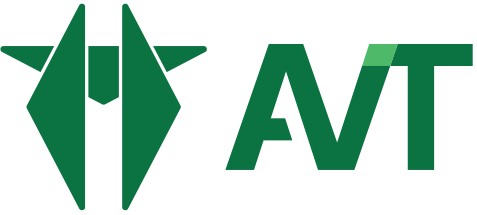Thinking about entering into a Service Level Agreement (SLA) with an Application Managed Services (AMS) business? Or maybe you already have, but the outcome wasn’t quite what you had hoped (ahem, PAID) for. At AVT we successfully manage an average customer load of 10,000 tickets/month and a solid history of successful client engagements. This blog will help you understand what an SLA is and how you can make sure it includes all the important components that protect your company from a failed engagement.
What is an SLA?
A service level agreement is a contract between a service provider and a client that describes the services, deadlines, program size, metrics and any other details that pertain to services the client is receiving. SLAs are instrumental in setting clear expectations, establishing a foundation of trust between the parties, and ensuring the client receives quality technical services within a specified timeframe and for an agreed upon fee.
How does the SLA protect YOU, the client?
- Performance Metrics – service level agreements define clear and measurable benchmarks for service performance.
- Guaranteed Quality – assure the client that their applications are receiving the service expected, and the parties are responding to open issues within agreed upon timeframes.
- Accountability – the service provider must perform at a level of service outlined in the SLA.
- Communication – both parties should consistently touch base with each other to minimize the risk of misunderstandings. The types and frequency of communication can be outlined in the SLA.
Key Components of a SLA
Creating an SLA requires all relevant business stakeholders to work together and develop a comprehensive and realistic service agreement. Here are some of the core components that can ensure the SLA is setting you and your business up for success.
Service Descriptions: a clearly defined scope of services will generally be found in the first section of the service level agreement. It should include a complete list of the services given – employee coverage, escalation ladder, response times to service requests, resolution time of service requests, incident management responsibilities, problem management responsibilities, reporting responsibilities and anything else relevant to the management of the application the service team is supporting.
Communication Responsibilities: clearly define the roles and responsibilities of the service provider and client teams in terms of issue resolution, including escalation procedures. This section should align with the service description.
Performance Reviews and Reporting: be sure to review the SLA with your service provider on a regular basis to nip any performance issues in the bud. The service provider will need to show they are performing high quality work for you. Performance metrics can also be defined here, such as how and when the service provider will show performance metrics to the client. Reviewing performance on a quarterly business is a good starting point. For example, regularly review the history of ticket resolution to ensure the AMS is meeting the time and quality standards of the SLA.
Incident / Problem Management: a solid SLA will clearly define processes for resolving issues – from reporting to resolution and closure. This includes a communication path for how to initiate a ticket, the timeframe the ticket needs to be resolved, and an escalation clause if needed. The path to resolution should include stipulations related to task severities (e.g. P4 = 48 hour resolution time period). A vigorous process is essential to help minimize downtime of applications.
Service Credits and Remedies: if the service provider fails to perform a service—or provides service under the required threshold—the service provider is required to provide credits to the client to compensate. These service credits are usually paid out in additional time, sometimes called “free work”. There should also be a remediation plan built into the agreement.
These best practices can ensure you enter into an effective SLA
- Realistic Expectations: setting achievable goals will set both parties up for success. For example, as the client, you should have a concrete understanding about the service provider’s expected response and resolution times for tickets. The service provider can help set these expectations.
- Collaboration: involve all stakeholders during the creation of a new SLA! This is key to the success of both the service provider and client.
- Clear Language: use jargon-free language when drafting a new SLA to ensure there are no misunderstandings among either party.
- Business Goal Alignment: the agreement should support the objectives of both the service provider and the client’s business goals.
Make the SLA bullet-proof
When evaluating an SLA for an Application Managed Service, make it a priority to include requirements that ensure legal and industry compliance.
Legal: confidentiality disclosures and termination conditions should be written up in detail to protect both parties.
Compliance: incorporate a robust compliance standard relevant to the industry and businesses at hand. The IT and compliance teams will be essential resources for writing this section of the SLA. Data compliance is paramount, so the extra work and care required for compliance is well worth the time.
Remediation: evaluate the disaster recovery plan with the right stakeholders to make sure it has every necessary detail to minimize application downtime.
Termination Conditions: clearly define the conditions in which you can terminate the SLA. Termination could occur due to a pattern of failed service levels, such as extended resolution of tickets (e.g. resolution time on P4 severity tickets regularly takes more than the agreed upon 48 hours to be resolved).
Conclusion
A service level agreement is integral to the success of a client’s engagement with an Application Managed Service business. It’s not just a contract, it’s the foundation of a relationship between the service provider and the client, where both parties are invested in mutual success. SLAs ensure the client is getting the best service possible for applications that are critical to their businesses’ performance. The service provider only succeeds when the client succeeds, so as you develop an SLA for your business, remember to create one that fosters a partnership built on trust, transparency, quality, and communication. As a client who may one day be party to an SLA, remember to build it in the spirit of mutual success.




